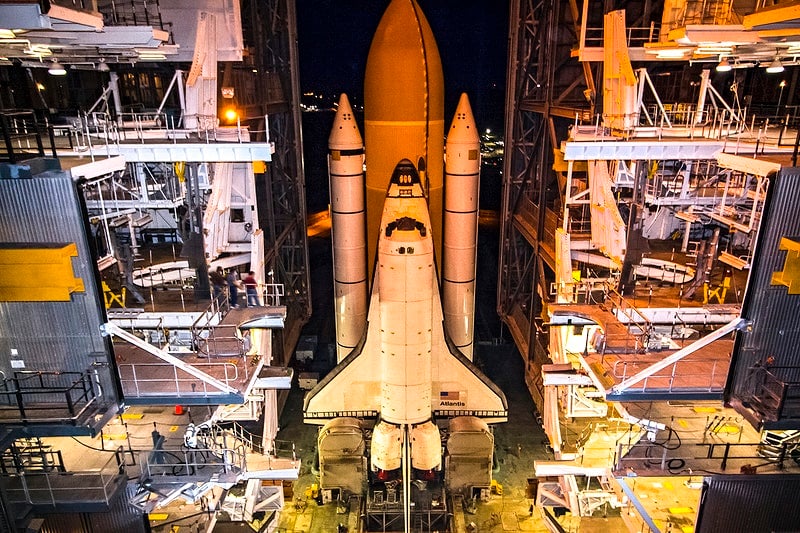Through the years, there were many changes NASA made to ensure the overall efficiency of the space shuttle. One of these changes was to reduce the weight of its external tank. There was a one-pound increase in the carrying capacity of the space shuttle for every pound reduced in its heaviness.
The original orange-glazed design of the external tanks wasn’t the main idea of the contractor, Lockheed Martin. The external tank’s alteration started from the color. Due to the modifications the external tanks required to ensure utmost efficiency, it was deemed necessary.
The Short History of the External Tanks
Lockheed Martin built these large orange vessels for the National Aeronautics and Space Administration (NASA) in 1973. By the year 2010, on September 30, the discontinuation of the external tanks was announced by NASA. Its reasoning was the inability of the external tanks to be used.
External fuels were massive in size, measuring 154 feet in height and 28 feet in width. Apart from that, it also weighed down the space shuttle severely, with its weight almost reaching 59,000 pounds when empty. When filled, the combined weight of the liquid nitrogen and liquid oxygen was equivalent to 535,000 gallons. The load totaled nearly 1.7 million pounds.
It was only reasonable for Lockheed to spend years on downsizing the heaviness that these external tanks carried. The initial weight of the external tanks was 76,000 pounds. Moreover, white paint fully coated the exterior of the two external tanks. The white color of the external tanks was deemed unnecessary. From then, the painting of the external tanks halted.
In the year 1982, the initial 76,000 pounds weight of the external tanks turned into 66,000 pounds. And by 1998, the super lightweight version of the external tank debuted. The weight and color of the external tanks weren’t the only aspects modified. NASA and Lockheed also reduced the amount of insulating foam that covered the tanks. (Source: Space)
The Non-reusable Rust-Filled External Tanks
The external tank of a space shuttle launch vehicle served as a container for the liquid hydrogen, which served as fuel, and the liquid oxygen oxidizer. The space shuttle’s use of the external tank came in its ascension, in which it provided the fuel and oxidizer to the three main engines. Additionally, the “backbone” of the shuttle was the external tank, deemed a necessary part of the takeoff since it also provides support for the solid rocket boosters and orbiters of the space shuttle. The external tank re-enters the earth’s atmosphere after the main engine cut-off.
Like the external tank, boosters also re-enter the earth’s atmosphere. The recovered solid boosters are reused and restudied while the external tanks were deposited and left to burn in the earth’s atmosphere.
The disposed external tanks have seemed possible to reuse in orbit for various uses. Its proposed reuses were for the external tanks to be raw material or for space stations to integrate them as research space. Even with the many proposals made for its reuse, not one has materialized. (Source: Space)
